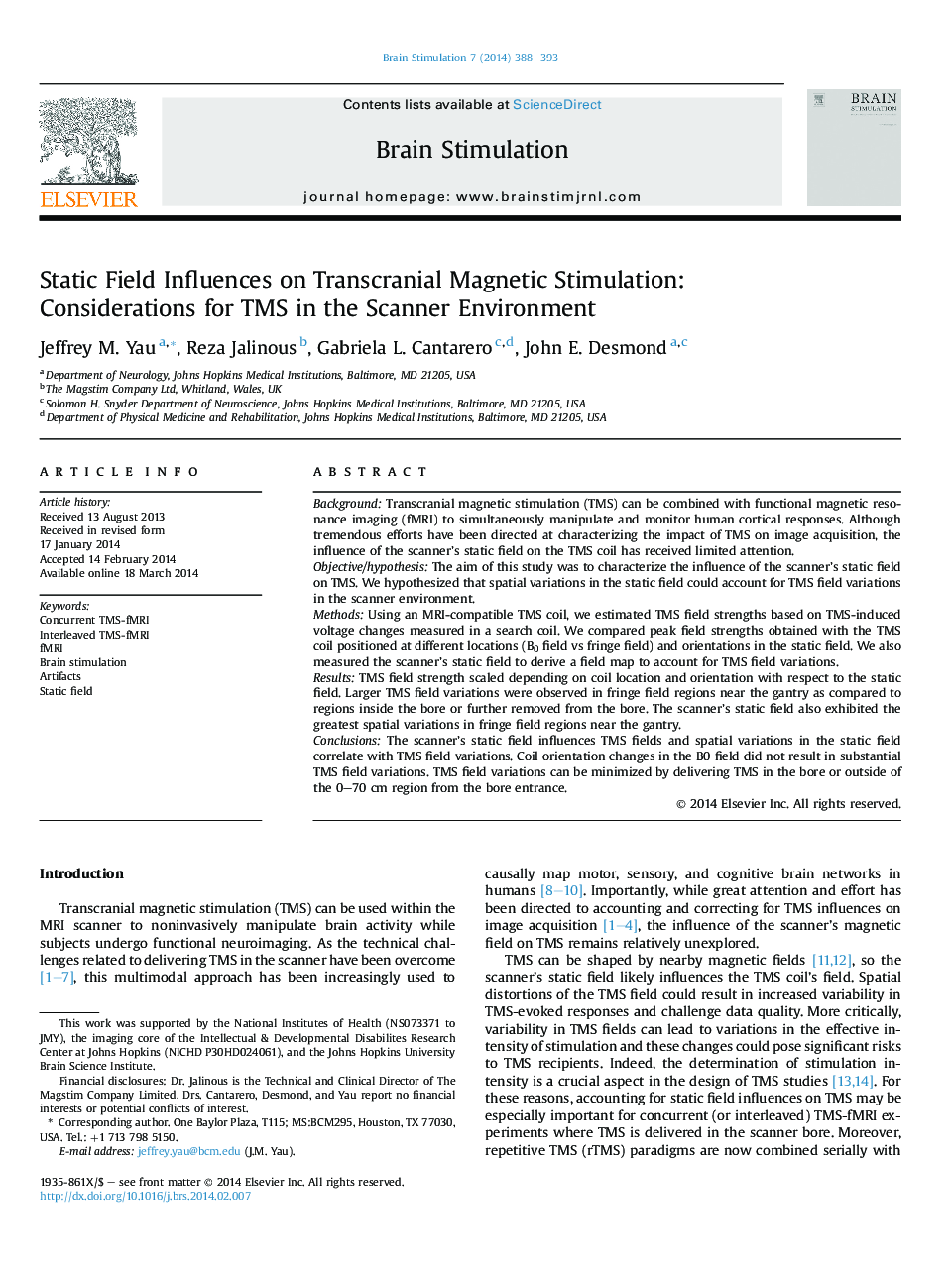| Article ID | Journal | Published Year | Pages | File Type |
|---|---|---|---|---|
| 3038777 | Brain Stimulation | 2014 | 6 Pages |
BackgroundTranscranial magnetic stimulation (TMS) can be combined with functional magnetic resonance imaging (fMRI) to simultaneously manipulate and monitor human cortical responses. Although tremendous efforts have been directed at characterizing the impact of TMS on image acquisition, the influence of the scanner's static field on the TMS coil has received limited attention.Objective/hypothesisThe aim of this study was to characterize the influence of the scanner's static field on TMS. We hypothesized that spatial variations in the static field could account for TMS field variations in the scanner environment.MethodsUsing an MRI-compatible TMS coil, we estimated TMS field strengths based on TMS-induced voltage changes measured in a search coil. We compared peak field strengths obtained with the TMS coil positioned at different locations (B0 field vs fringe field) and orientations in the static field. We also measured the scanner's static field to derive a field map to account for TMS field variations.ResultsTMS field strength scaled depending on coil location and orientation with respect to the static field. Larger TMS field variations were observed in fringe field regions near the gantry as compared to regions inside the bore or further removed from the bore. The scanner's static field also exhibited the greatest spatial variations in fringe field regions near the gantry.ConclusionsThe scanner's static field influences TMS fields and spatial variations in the static field correlate with TMS field variations. Coil orientation changes in the B0 field did not result in substantial TMS field variations. TMS field variations can be minimized by delivering TMS in the bore or outside of the 0–70 cm region from the bore entrance.
